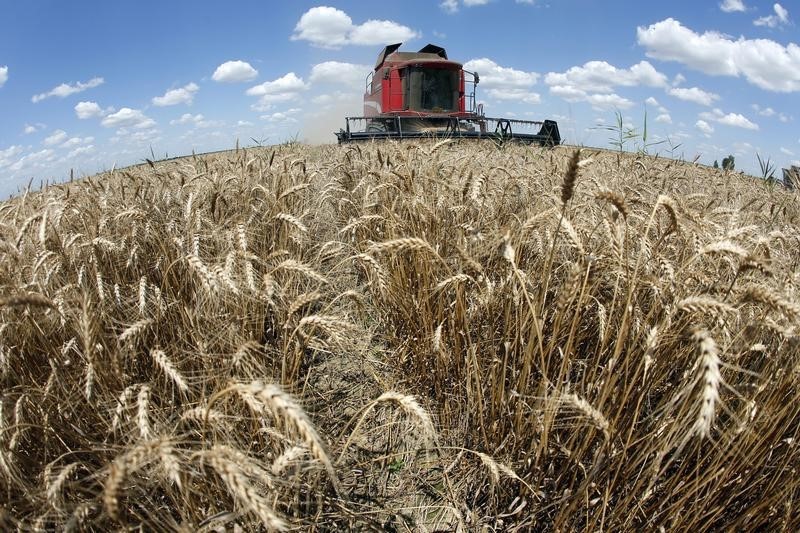Investing.com - U.S. wheat futures rose sharply on Tuesday to hit the highest level in almost four weeks as forecasts showing adverse weather conditions across the U.S. grain belt supported prices.
On the Chicago Mercantile Exchange, US wheat for March delivery hit a session high of $5.4113 a bushel, the most since January 22, before trading at $5.4088 during U.S. morning hours, up 7.67 cents, or 1.44%.
Grain markets were closed on Monday for the Presidents Day holiday. On Friday, US wheat for March delivery tacked on 2.6 cents, or 0.52%, to close at $5.3560 a bushel.
Updated weather forecasting models pointed to frigid weather spanning from the southern Great Plains region to the Northeast through February 19.
Colder-than-normal weather will then linger in the mid-Atlantic states through the Ohio Valley from February 20 until the end of the month, potentially threatening yields and reducing the quality of the harvest.
Despite gains, wheat has been under heavy selling pressure in recent weeks amid ample global supplies and indications of reduced demand for U.S. wheat.
Meanwhile, US soybeans for March delivery inched up 6.28 cents, or 0.63%, to trade at $9.9688 a bushel after touching a daily peak of $9.9820, the highest level since February 3.
US soybeans for March delivery rose 5.4 cents, or 0.56%, on Friday to settle at $9.9600 a bushel amid indications of strong demand for U.S. supplies.
U.S. farmers sold 746,200 tons of soybeans last week according to the Department of Agriculture, above expectations.
The U.S. National Oilseed Processors Association is due to release its monthly report later in the day, as investors assess the strength of demand for the oilseed.
Despite recent gains, prices of the oilseed remain vulnerable amid optimism over crop prospects in Brazil and Argentina.
Elsewhere on the Chicago Board of Trade, US corn for March delivery advanced 2.27 cents, or 0.59%, to trade at $3.8988 a bushel. On Friday, US corn for March delivery eased up 0.6 cents, or 0.19%, to end at $3.8800.
Corn is the biggest U.S. crop, followed by soybeans, government figures show. Wheat was fourth, behind hay.
